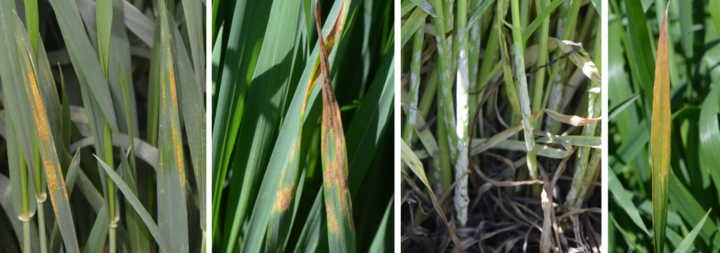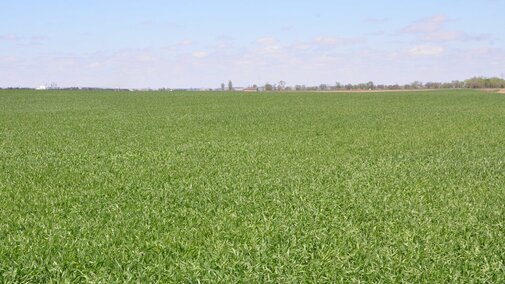Wheat fields are still looking green (Figure 1). However, development of several diseases is increasing. On April 26, stripe rust was confirmed in Nuckolls County in south central Nebraska and on April 27, it was found at low to moderate levels in research plots at the University of Nebraska-Lincoln’s Havelock Research Farm near Lincoln in Lancaster County (Figure 2).
Various other diseases were observed during a survey of wheat fields and research plots at UNL’s Agricultural Research and Development Center (ARDC) near Mead on April 27. Among them were Septoria leaf blotch which was present at high incidence (percentage of diseased plants) and low to moderate severity (percentage of diseased plant or leaf area, Figure 3) and powdery mildew which was mostly confined to the lower canopy at moderate to high severity (Figure 4). Barley yellow dwarf, a virus disease (Figures 5 and 6), was also observed at low to moderate incidence.

Management
Although the current cold temperatures will somewhat slow development of stripe rust, a return to seasonal temperatures coupled with wet weather will favor its rapid development. Growers should scout more frequently to determine the extent of stripe rust in their wheat fields. Most fields are less than two weeks from full flag leaf emergence.
Timing of a fungicide application to protect the flag leaf from stripe rust and fungal leaf spot diseases is critical. If an application is made too early, the flag leaf will not be protected. On the other hand, waiting too long after flag leaf emergence will give more time for stripe rust to develop, which will reduce fungicide efficacy. Fungicides are most effective when applied preventively, not curatively. Virus diseases cannot be controlled once they occur.
Resource
When selecting a fungicide, consider information in Fungicide Efficacy for Control of Wheat Diseases, a resource from the North Central Committee on Management of Small Grain Diseases (NCERA-184).


